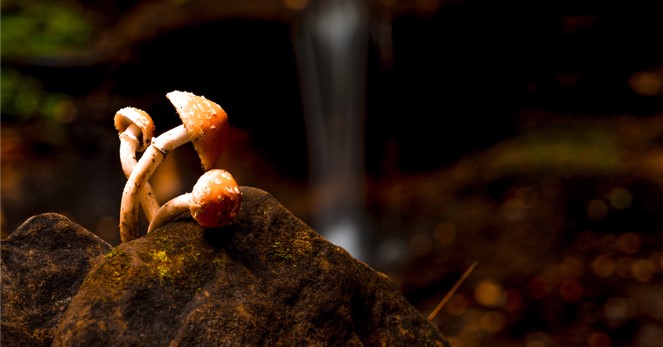
Use of Psychedelics to Treat PTSD, OCD, Depression and Chronic Pain – a Researcher Discusses Recent Trials, Possible Risks
New research is exploring whether psychedelic drugs, taken under strict medical supervision, might help in treating post-traumatic stress disorder, chronic pain, depression and obsessive-compulsive disorder. Dr. Jennifer Mitchell – a professor in the Departments of Neurology and Psychiatry & Behavioral Science in the School of Medicine at the University of California, San Francisco was interviewed by SciLine. She discusses what scientists have found to date about the effectiveness of these drugs in treating these disorders and how best for them to be administered. Highlights and key excerpts of the interview have been transcribed and published below.
What are psychedelic drugs and how do they work?
Dr. Jennifer Mitchell: Psychedelic basically means “mind manifesting,” suggesting that the compound assists one in uncovering subject matter that perhaps is otherwise deeply hidden from the conscious mind.
It’s a slightly different term from hallucinogen, which you see used almost interchangeably at times with the term psychedelic.
A hallucinogen by definition is something that makes you see, hear, smell something that isn’t otherwise there, so you can imagine there’s a lot of overlap between psychedelics and hallucinogens.
Which types of psychedelic drugs are being studied by researchers for potential therapeutic use?
Dr. Jennifer Mitchell: The two most well studied drugs at this point are MDMA and psilocybin.
MDMA is being evaluated mainly for treatment of post-traumatic stress disorder treatments, and psilocybin mainly for treatment of resistant depression and major depressive disorder.
MDMA is the furthest along because there’s phase 3 data (data from late-stage research) and the possibility that a new drug application would be submitted to the FDA sometime later this year.
LSD is also being evaluated for a number of different indications, most notably obsessive-compulsive disorder.
And then a couple of sort of heavier hitters are now being tested in primarily healthy control populations, including drugs like mescaline and ayahuasca.
What have scientists discovered about whether these drugs are effective in treating health problems like PTSD or chronic pain?
Dr. Jennifer Mitchell: The drugs so far appear to be quite effective. I think one key, though, is that they’re typically being administered in conjunction with some form of psychotherapy.
So it’s important to keep that in mind when we look at the results from some of these recent trials that these are not drugs that are being administered in isolation. You are not taking home a bottle of pills and taking those twice a day as you would, say, an antidepressant. These are administered in a very particular way.
What is involved in therapeutic treatment using these drugs?
Dr. Jennifer Mitchell: Typically, prior to taking the drug at all, subjects participate in a number of preparatory sessions so that they understand a little bit about what is going to happen on an experimental session day.
And then subjects come into a room that looks very much like a comfortable living room, and they spend all day there. The drug is administered typically in the morning. For psilocybin, you’re looking at a six-hour dosing session, and for MDMA, an eight-hour dosing session.
You are in the company of a group of trained providers: therapists, psychedelic facilitators, psychiatrists and clinical research coordinators.
What are the potential risks of using psychedelic drugs for therapeutic purposes?
Dr. Jennifer Mitchell: One concern we’ve had is cardiovascular risk, and so we are taking great care in some of the clinical trials at present to evaluate cardiovascular burden, including heart attack risk, during and after the experiment. This evaluation includes tracking the heart rate and blood pressure of the participants.
In addition, researchers are worried about suicidality, in part because these are treatment-resistant populations that we’re starting off with, and so there’s a concern that perhaps, if they’re destabilized – either by the psychedelic, or just by tapering off their other meds in order to be part of a psychedelic trial – that we could run the risk of suicidality.
Lastly, I think the FDA has been concerned about the possibility that psychedelics are addictive, and so we’ve been following up with study participants to ensure that they aren’t engaging in drug seeking or drug taking outside of the study.
What do we know about the safety of taking psychedelics outside the clinical context?
Dr. Jennifer Mitchell: I think we’ve all heard stories from the ‘60s and ’70s of people taking psychedelics and having very bad experiences. What we know now is that the environment in which you take the psychedelic is of the utmost importance. It’s not appropriate at this point to try to take some of these substances or replicate some of these protocols on your own without oversight.
Watch the full interview to hear more about psychedelic medicine.
SciLine is a free service based at the nonprofit American Association for the Advancement of Science that helps journalists include scientific evidence and experts in their news stories.
